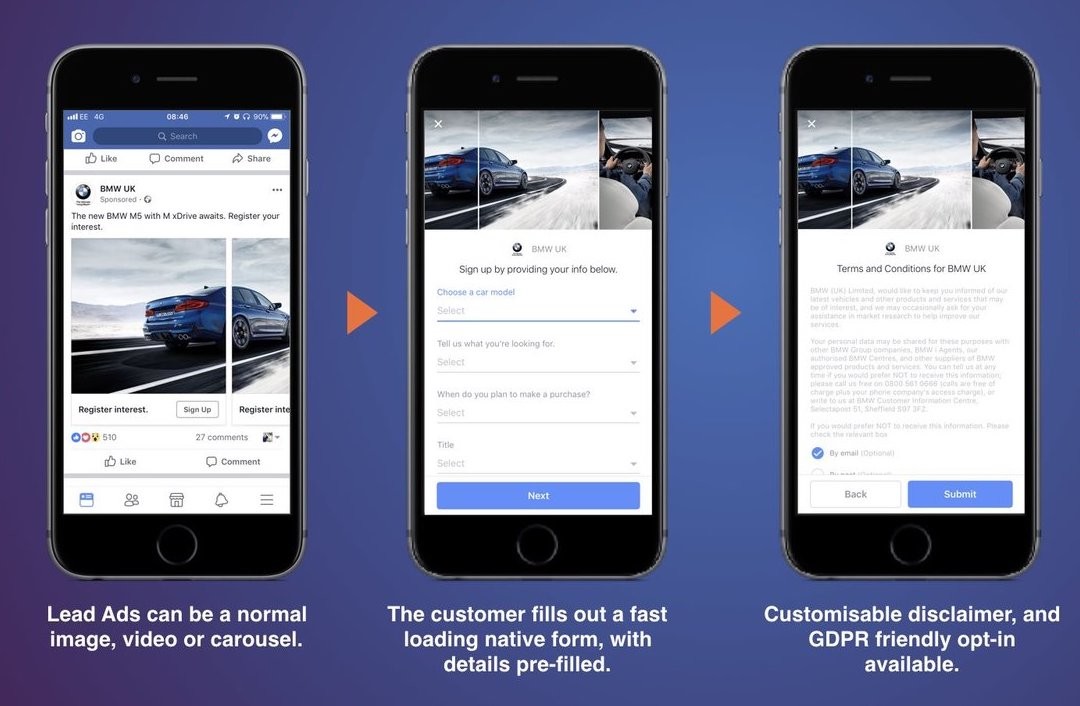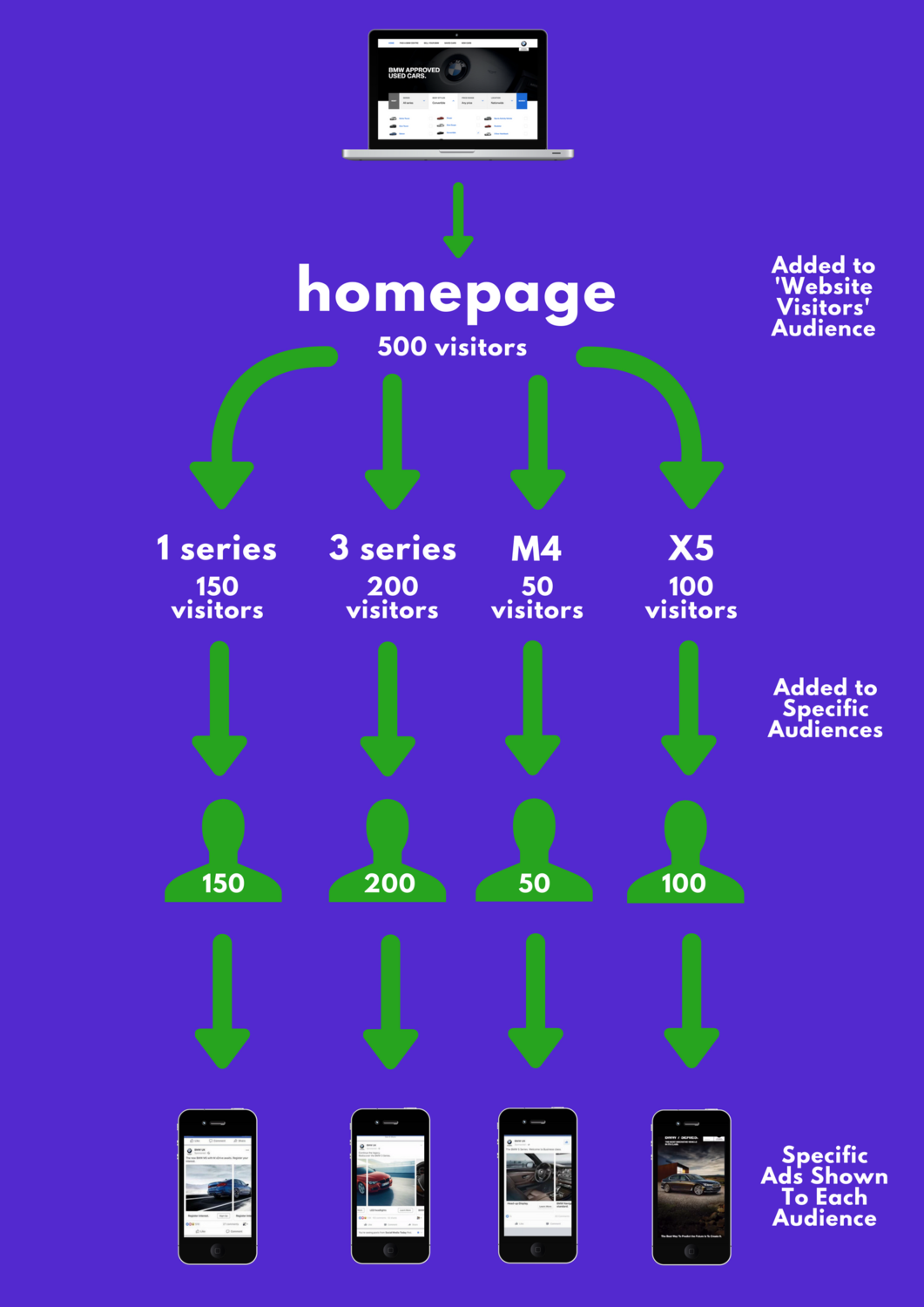What is Retargeting?
Social media retargeting, in short, is tracking your web visitors and then retargeting them Facebook (and Instagram) ads and at Divide we love it! The reason this has become such a popular technique across nearly every industry is that unlike ‘boosted posts’ and simple advertising, this method allows you to specifically target people you know are interested in your offering, not just those who fall into the right demographic and could be interested in what you’re offering.
The code (named Facebook Pixel) will start tracking your web visitors immediately and is extremely versatile. The code can be edited to track custom events such as visitors who add items to a basket and don’t check out, it can even work to track offline events in some cases, helping to attribute online marketing to people coming through the door.

How Does it Work For Car Dealerships?
1.) Track & Build an Audience
If you use Google Analytics on a reputable Car Dealer’s website, you’ll most likely see a huge amount of daily traffic spread out across the website, full of people looking at different models. Let’s take BMW for example and keep the numbers simple for now, say there’s a daily average of 500 visitors to the website:
- 200 looking at the 3 Series webpage
- 150 looking at the 1 Series webpage
- 100 looking at the X6 webpage
- 50 looking at the M3 webpage
Simply by having the Pixel on your website, you’ve just built an audience of 500 people interested in a BMW. It’s that simple. Those 500 people will be added to a ‘Website Visitors’ audience within your Facebook Ads account for you to target in the future.
2.) Refine the Audience
At this point, you’ve got an audience of 500 people who are interested in ‘a BMW’ which is great and you could stop there, but, to take it a step further we can track & refine the visitors as they work through the site. This is how we get a better return when we launch the ads.
Prewarning: This bit can get a bit confusing but stay with me!
We’ll select the pages we want to create an audience from (in this case the pages for the 1 series, 3 series, X6 and M3) and create empty audiences in Facebook Ads Manager for each. Then, as people visit the pages, the empty audiences will be populated with people who’ve visited those pages and you’ll end up with databases full of people looking for a 1 series, a 3 series, an X6 or an M3.
3.) Understand the Audiences & Create Custom Content
Now you’ve got 4 groups of unique people who are interested in 4 different models of BMW at different price points for different reasons. As a car dealer, you’ll understand who buys which model of car better than anybody else and what sells these cars.
Let’s take the X6, a big car perfect for someone who has a family and needs to ferry kids around but would also like to challenge everyone on the slip road on the way to work.
You’d then create content exclusively for this audience e.g. a video showcasing the X6’s huge boot space as well as it’s impressive BHP. Then, just repeat this step for each audience.
4.) Start Retargeting
You’re ready to go! You’ve done the hard part in building the audiences & developing the content, now it’s time to push it out and monitor the returns.
A good example of an ad to run would be a ‘lead’ ad (shown below) to increase Test Drives and collect even more data on your prospects.
Imagine you were looking for a new X6 online and all of a sudden you saw the chance to test drive one tomorrow. That’s exactly what you’re doing!
Facebook Ads Manager offers incredible distribution tools for your ads and seriously in depth insights for post campaign analysis to help you understand your audiences even better and therefore improve your results next time!
Here’s How the Process Works as a Whole:
User lands on the BMW dealer’s homepage, they’re added to the ‘Website Visitors’ audience straight away.
Next, they navigate to the M3 webpage. They’re then also added to the audience of people interested in an M3.
Then, create your content, understand each audience and decide how you want to market to them.
Lastly, run the ads, monitor their success and reap the rewards!






